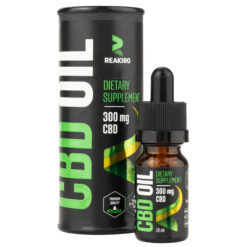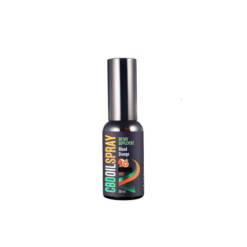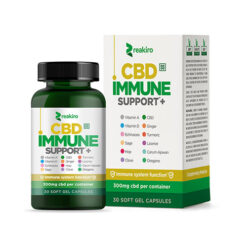CBD oil has surged in popularity for its versatility and health benefits. From reducing anxiety to alleviating pain and promoting overall wellness, many are turning to CBD for natural relief. But have you ever considered making your own CBD oil at home? Crafting your own allows you to control the ingredients, potency, and quality while also saving money. This guide will walk you through everything you need to know about creating your own CBD oil.
Understanding CBD Oil
Before diving into the process, it is important to understand what CBD oil is and why people use it. Cannabidiol (CBD) is one of the many compounds found in cannabis and hemp plants. Unlike THC, CBD is non-intoxicating and cannot get you “high.”
CBD oil is created by extracting CBD from the plant and infusing it into a carrier oil like coconut or olive oil. The result is a versatile product that can be consumed directly, added to food, or applied topically.
Recommended products
-
Reakiro – Broad Spectrum CBD Oil
R349.00 – R499.00 -
Reakiro – Broad Spectrum CBD Oil Mouth Spray – Blood Orange
R499.00 – R799.00 -
Reakiro – CBD Immune Support Capsules
R549.00
Potential Benefits of Homemade CBD Oil
Homemade CBD oil offers the same range of benefits as store-bought options, including:
- Stress and anxiety relief: CBD is known for its calming effects.
- Pain management: Many use CBD for its anti-inflammatory properties.
- Improved sleep: A small dose before bed can promote restful sleep.
- Skin health: When applied topically, CBD oil may reduce redness and irritation, improving overall skin health.
Why Make CBD Oil At Home?
Making your own CBD oil offers several advantages:
- Cost-effective: Store-bought CBD oils can be expensive, especially if you are looking for high-quality, organic products. DIY CBD oil can be significantly cheaper.
- Control over ingredients: When you make your own, you can choose organic, locally sourced hemp and high-quality carrier oils.
- Customisable potency: Adjust the CBD concentration to suit your needs, whether you prefer a mild or potent oil.
- Fun and rewarding: The process is a hands-on way to connect with the plant and learn more about its properties.
What You Will Need
To make CBD oil, you’ll need a few basic tools and ingredients.
Ingredients
- Hemp or CBD-rich cannabis flower: Choose high-quality, organic flower with the desired CBD-to-THC ratio.
- Carrier oil: Popular choices include coconut oil (for its long shelf life and neutral taste), olive oil, or avocado oil.
- Optional flavourings: Herbs like lavender or mint can be added for a unique touch.
Equipment
- Oven or decarboxylator: To activate the CBD through decarboxylation.
- Double boiler or slow cooker: For infusing the CBD into the carrier oil.
- Cheesecloth or fine mesh strainer: To strain the plant material.
- Storage container: A dark glass bottle is ideal for preserving freshness.
The Step-By-Step Process
- Decarboxylate your flower – Decarboxylation is the process of heating the cannabis to activate its cannabinoids, making them bioavailable.
- Preheat your oven to 104°C.
- Break the flower into small pieces and spread it evenly on a baking sheet.
- Bake for 30-45 minutes, stirring occasionally to ensure even heating. The flower should turn a light brown color.
- Combine the flower and carrier oil – Once decarboxylated, the flower is ready to be infused into your carrier oil.
- Place the flower and carrier oil in a double boiler or slow cooker. Use a 1:1 ratio of flower to oil for moderate potency.
- Heat on low (around 70°C) for 2-3 hours. Stir occasionally to ensure even infusion.
- Avoid overheating, as excessive heat can degrade the cannabinoids and terpenes.
- Strain the mixture – After infusing, strain the oil to remove the plant material. 3
- Line a funnel or bowl with cheesecloth or a fine mesh strainer.
- Pour the mixture through the cloth, squeezing gently to extract every drop of oil.
- Discard the leftover plant material.
- Store your CBD oil properly:
Transfer the strained oil into a dark glass bottle to protect it from light exposure. Store in a cool, dry place to extend its shelf life. Your homemade CBD oil can last for up to six months when stored properly.
Exploring Infusion Methods: Alternative Techniques To Try
While the traditional stovetop method is popular for making CBD oil, there are alternative infusion techniques worth exploring. These methods can offer greater control, efficiency, or even enhance the flavour profile of your oil.
Sous Vide Method
The sous vide method involves vacuum-sealing the decarboxylated flower and carrier oil in a heat-resistant bag or jar and placing it in a water bath at a controlled temperature.
- Advantages: Precise temperature control prevents overheating and preserves delicate terpenes.
- How to do it: Set your sous vide device to 70°C and immerse the sealed mixture in the water bath for 2-3 hours. Afterward, strain the oil as usual.
Pressure Cooker Method
Using a pressure cooker is another way to infuse CBD into oil efficiently. This method speeds up the process while still preserving the active compounds.
- Advantages: Faster infusion and consistent heat distribution.
- How to do it: Combine the flower and oil in a heatproof jar, seal it tightly, and place it in the pressure cooker with a small amount of water. Cook on low pressure for about an hour, then strain.
Alcohol Extraction (Tinctures)
For a different type of DIY project, consider making a CBD tincture using alcohol instead of oil. This method is ideal for creating a highly concentrated product.
- How to do it: Soak decarboxylated flower in high-proof alcohol for 24-48 hours, shaking occasionally. Strain the mixture and let the alcohol evaporate slightly for a stronger tincture. Note that this method requires caution due to the flammability of alcohol.
Dosage And Usage Tips
When using your DIY CBD oil, start with a small dose to gauge its effects. Typically, 1-2 drops under the tongue is a good starting point. Adjust as needed based on your body’s response.
You can also incorporate your CBD oil into recipes, such as smoothies, salad dressings, or baked goods. For topical use, mix it with essential oils to create soothing balms or lotions.
Tips For Success
- Choose high-quality ingredients: The better your starting materials, the better your end product. Look for organic, lab-tested hemp or cannabis.
- Experiment with ratios: Adjust the flower-to-oil ratio to customise potency.
- Keep it low and slow: Gentle heat is key to preserving cannabinoids and terpenes.
- Label your oil: If you make multiple batches, clearly label the potency and date of production.
Crafting your own CBD oil is a rewarding process that empowers you to create a product tailored to your needs. By taking control of the ingredients and preparation, you can enjoy a cost-effective, high-quality oil that suits your preferences. Whether you’re seeking relaxation, pain relief, or a fun DIY project, making CBD oil at home opens up a world of possibilities.
So why not give it a try? With a little patience and practice, you will have a custom-made CBD oil to enhance your wellness journey.








